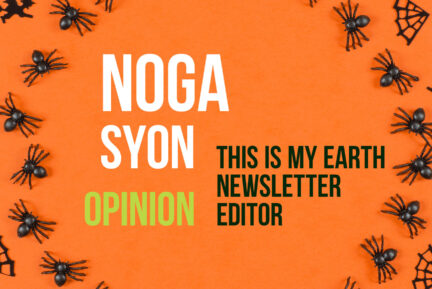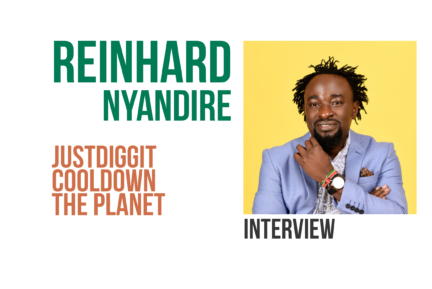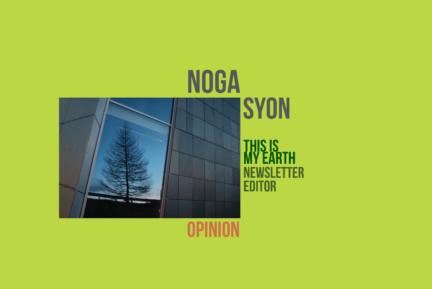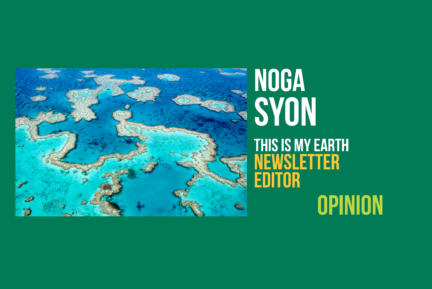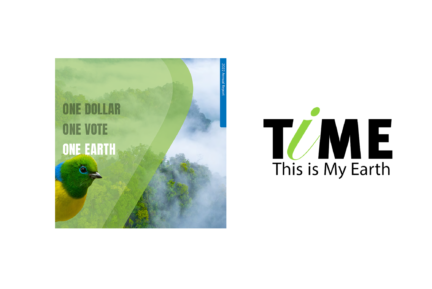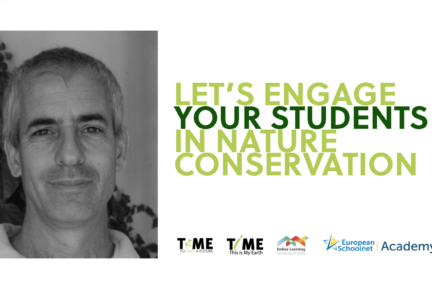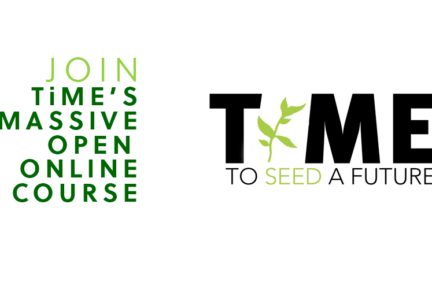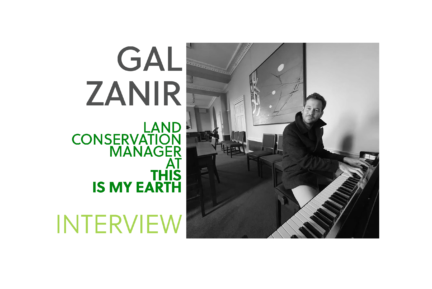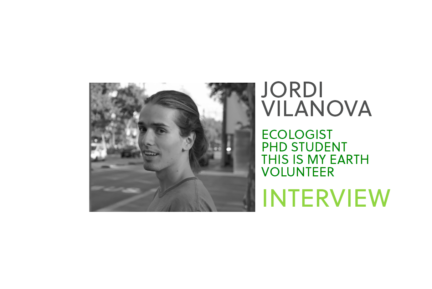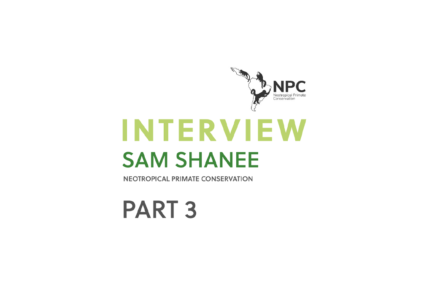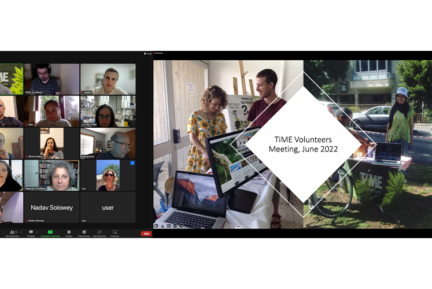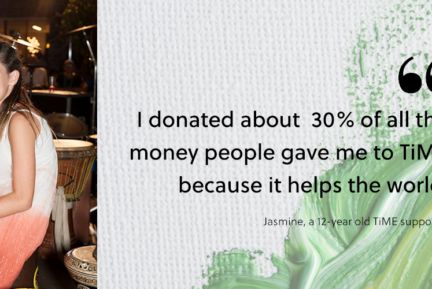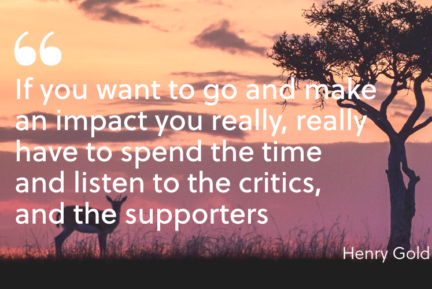This is My Earth Interviews artist Tomer Baruch.
Hi Tomer! Thanks for your time. Can you please introduce yourself to the This is My Earth community?
My name is Tomer, I am a musician, and I’ve created an Instagram account named “Animals and Synthesizers.” In that account, I take animal videos and compose electronic music for these videos.
Is music your main job?
Yes, I’m from Tel Aviv, and my main job is making music. I am also a teacher. I teach music at Haifa University, and I’m also into sound design.
Where does the idea of connecting animals and electronic music come from?
I would say it all happened very randomly. While scrolling on Instagram, I watched animal videos, and I found some of them very funny and weird. I started to imagine what they would sound like if I used an electronic score. I thought this would be interesting, maybe because this is something you would not expect from this kind of video.
How did the sounds come to your mind? Were you relying on the documentary soundtracks, or were you influenced by more “traditional” animal sounds?
Yes, I already imagined the sounds. It has to do with the animals’ movements and the setting, their color, their shape… It’s all a part of the scene; I could see how it would sound. When you make music for videos, you pay a lot of attention to the scene and try to find the natural sounds that go with it.
Are animal movements very regular in terms of tempo?
Sometimes yes, but usually animals are not very regular. They are constantly changing and quite unpredictable. But sometimes you can see that they do something that is a bit repetitive, and that is where you can find a sort of rhythm. … you can find a pattern, some sort of syncopated rhythm that is there, not obvious, but some kind of beat that is there.
Do you usually edit the videos to which you put music?
I usually don’t edit the videos. However, in this new project, “Animals of the Sea,” I had to edit them because the videos are generally much longer.
What can you tell us about the other artists involved in the project, such as designers, photographers…
Photographers did not exactly work with me. In this case, they had their projects and I approached them, and I asked them if I could use the videos for this project. And the response was almost always affirmative. They’ve always either let me use it or sometimes I’ve paid a little — but not very much. And I had some help from video editors. A designer did the graphics for the album, and the master was made at another studio.
Do you usually work at your studio?
Yes, I have my studio, where I make music.
What about the reception you are getting from your projects?
It’s a pretty popular project. People are sharing it with their friends, and it has become viral. I think it’s on the right side of the Instagram algorithm. Occasionally I get some article in the newspaper. I got one from the New York Times last November that was very encouraging. With the current project, I’m trying to get more articles too. I have also been sending news to the media, so we will see what happens.
What sort of feedback are you getting from the public? Any fans?
I think people like it.
You have over 100k followers on Instagram. Do you get any weird messages sometimes?
(Laughing) Nobody is harassing me yet, but some people like it. I have sold about 250 records, which is not so many actually. I haven’t got any marriage proposals.
Tom Baruch is a genius at scoring the wild movements of animals as diverse as alpacas, jellyfish and herons.
The New York Times
When do you think is the best time to listen to your music?
Right now! Now is the right time. Just drop everything and go listen! It is not exactly party music, so probably it’s better to listen to it when you are at home.
Is the animal-conservation issue a secondary aspect of this project?
I must say it is not my main goal. Creating music or art with an environmental goal (or any other ideological purpose) sometimes gets too didactic.
When you make art, you have to make sure that it is good art; the art has to be able to stand by itself. But, of course, I put some “animal-friendly rules;” for instance, I don’t use videos recorded with drones chasing animals. In short, I don’t use any videos in which animal cruelty has occurred.
So you don’t think your videos are raising awareness?
I don’t know about that. What the project is showing is that animals are incredible. If people think animals are fantastic, will they become more aware of their importance? Maybe yes, it makes sense. There are other types of art created to raise awareness. I don’t think my art is like that, but I hope it will help animals. I care about animals; I am vegan. It is a complicated issue.
Why do you think it is so complicated?
Because once you try so much, you get into this grey area where people may not trust you. I think, in a sense, it is in the same category as the David Attenborough series “Blue Planet,” for example, the “admiring nature” category.
Do you choose endangered or threatened species to create your videos?
I don’t choose them like that. But it is essential for me that the videos show some degree of respect, in a way that you can admire the beauty of the animals. Also, I’m always trying… to make the music go with it and sheds light and accompanies the animals…
So the audience can be together with the animal…
Yes, something like that. I try to compose so that the music makes the viewer notice details and become better acquainted with the animal. So I use the music to bring the music closer to the animal.
How are your live shows?
I play usually in electronic-music venues and ambient-music clubs. I use some images and videos. It is a particular kind of music.
What kind of audience comes to your shows?
I started a month ago, so I did three live shows with this project. So I don’t yet know precisely what audience I have, but I’ve seen primarily young people; I think it is a subgroup of the general audience. You have people who go to concerts, and then you have a much smaller group of people who attend experimental shows.
Is the ambient-music scene very indie?
It’s getting bigger. Ambient music has become more extensive, but it’s still a relatively small niche. But it’s ok, everything is a niche today.
When you are teaching, do you talk about your music?
I don’t usually talk about my music with my students. Maybe some of them know what I’m doing, and if they want, they can Google it. But usually, they don’t do it, maybe occasionally.
When you were young, were you very engaged in social movements?
I was very engaged when I was young. I think some of my students are also very engaged; once, one of my students could not attend our class because she was injured during a demonstration.
Did you use music to protest, or was music something else?
When I was young, I was a member of the student academy, so we used our music to protest, but not electronic music. Every demonstration has a rhythm and anthem, but this is not the kind of music I usually do.

How did you come across This is My Earth?
I have a good friend who is an activist, and I told him I was looking for an organization that is helping animals and that is small enough so that a donation will make a difference. I know with my project, at least now, I’m not raising so much money, so if I make this donation to a more significant nonprofit, it would not make any impact. This friend of mine knows Uri Shanas, the founder of TiME, and he recommended I talk to him.
Do you remember when the inspiration to fight for nature conservation came?
When I was young, my parents took me on lots of hikes to see nature. I lived in a rural area, so nature was part of my childhood. Then, in high school, I became a volunteer for the Society for the Protection of Nature in Israel; so for one year, I guided kids on hikes and taught them about flowers and species. Then, at university, I worked from time to time as a tour guide too.
Do you get inspired by your hikes?
Well, I don’t bring my computer on hikes and start composing. However, it is true sometimes I sing the melodies I feel from nature and record them on my phone. I use the voice memo APP, but I don’t work in nature.
I imagined you would sing the melody to your phone once you see a wild animal moving or doing something strange…
In Israel, if you see a wild animal, you usually see it for a short time. Normally you would see a mountain goat; you can see the Capra ibex — that is a bit different from a mountain goat — but usually, you see them, and you have 30 seconds at most to get inspired.
What was the most transformative experience you ever had in nature?
I think it happened when I was 7. We went on a school trip to the desert. We hiked for five days during the day, and we slept in a tent every night. We did this very famous Israeli trail called the Genesis trail. I believe it’s called that because you don’t see any human signs for almost a week. I was very impressed by it; I remember watching the skies at night, feeling the immensity of the universe surrounding me. I think this experience led to volunteering for nature conservation.
What is your perspective on climate change, and how do you see people’s attitude towards it?
I think we are living in a very messy moment. I believe we are already feeling the consequences of climate change. The extreme heat waves are affecting us in Israel, and it’s getting harder to live in Tel Aviv. I’m also sad that some people are turning climate change into a political issue when, in truth, it is pure scientific evidence. It is happening; we should agree on that. And I think capitalist forces are turning this into a debate so they can keep on making a profit in the short term.
Do you think people’s attitude is changing toward animals?
I don’t even think this is about animals. Some people like animals, some people don’t; some people eat them, some people don’t. I do not believe this debate is about whether animals have a soul or whether we should eat them or not. This is about how we face a threat to our health and that of our children and grandchildren. I don’t think there is any conflict here; there’s no doubt about what should be done.
Are you experiencing a change in the community surrounding you?
I think my friends have a similar opinion to mine. Most of my friends eat meat, but I also have many vegan friends. Most people are actually sympathizing with vegan diets and think it’s the right thing to do. I’ve never met anybody claiming we should kill cows because they are evil or something like that. People understand that killing animals or making a profit is not good.
How do you see Israel environmentalism politically speaking?
I think our situation is not as bad as the United States. I believe there are fewer people denying climate change. Energy companies are less potent in Israel than in the US, so fewer lobbies try to fool people’s minds. In Israel, there is also a growing community of people looking for alternative sources, demonstrating and willing to help in our transition towards a greener country.
How do you see that future?
Have you heard about solarpunk?
I haven’t. What about it?
It is a movement in science fiction, such as Cyberpunk (like Blade Runner and Ghost in the Shell). Also there is Steampunk, which takes 90s technology to the future, so you can see ships that can fly and things like that. Solarpunk is also a science-fiction movement, but in this future genre, humans have learned to work with nature, energies are green and renewable, and technology is used wisely for the common good. Solarpunk pictures an utopic future, the one environmentalists would like to live in. Science fiction was optimistic in the 50s and the 60s, but in the 80s it became dystopian. I read this article claiming for more utopian science fiction and I gave it some thought.
Why is that so important?
Art influences people’s opinions and minds, and if we create an optimistic science-fiction possible future, we would be accepting the idea that a better world is likely to happen and that not everything is lost. If we can have a bit of utopia, whe can make it happen.
Your project “Animals and Synthesizers” is a little bit like that.
Yes, I think so; it is an optimistic art form. I think this project would fit very well in the Solarpunk movement.
Why do you think This is My Earth is so special?
I think TiME is a very clever project, unlike no other in the field of nature conservation. Finding land important to animals and local communities in hotspots and saving it before it becomes essential to humans and corporations is not only brave but necessary. Using small resources at the right time, empowering people with education and democracy, and doing that transparently and scientifically — come on, there is no other project like that.
What about the right to vote?
Usually, when I give money to organizations, I need some trust, because there is so much greenwashing everywhere. Remember the Africa Live Aid concert in the 90s? Where did all the money go? To authoritarian regimes. So I only give money to the organizations I trust, and I usually trust those I know, meaning I know someone within the organization. That makes it difficult in terms of the scale of the project you can support. But I believe TiME can be trusted. I’m sure TiME’s board of directors and the scientific advisory committee will make the right decisions.
How do you imagine the music of This is My Earth?
Interesting! It would be happy and optimistic music, maybe cute. TiME is this little animal running under the nose of more prominent organizations and corporations and saving the suitable land before it’s too late, before they even have the chance to imagine taking it. TiME would be like a squirrel; TiME doesn’t go face-to-face, TiME is brilliant, TiME takes the correct nuts and stores them.
Finish the sentence: Join TiME because…
Because they are relaxed and clever, and because by supporting them we can all save a lot of trouble in the future.

